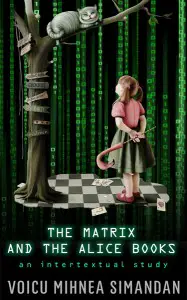 A more limited version of intertextuality has been developed in a number of theories, starting from the late 1960s onward. A very important representative of such a trend is the contemporary French theorist and critic Gérard Genette.
A more limited version of intertextuality has been developed in a number of theories, starting from the late 1960s onward. A very important representative of such a trend is the contemporary French theorist and critic Gérard Genette.
Structuralists believe in criticism’s ability to locate and describe a text’s significance, even if that significance concerns an intertextual relation between a text and other texts. Post-structuralists reject the idea that criticism can retrace the origins of a text. Thus, intertextual theorists have been divided into two camps. The first camp, structuralist in nature, believes that the signification of a text can be fully explained by describing the basic units that form the text and their relation to other texts. The second camp, post-structuralist in nature, emphasizes the uncertainty of discovering the relation between signifier and signified.
Genette is considered to be a theorist of the first camp, who takes a structuralist approach to intertextuality. Structuralists refocus their attention away from the details of individual works to the systems out of which they have been constructed. Genette is not concerned with individual symbols or individual works, but with the way in which signs and texts function within and are generated by describable systems, codes, cultural practices, and rituals.
Genette focuses the major part of his studies on the nature of narrative discourse and especially narrative fiction. In his trilogy, composed of The Architect: An Introduction (1992), Palimpsests: Literature in the Second Degree (1997a), and Paratexts: Thresholds of Interpretation (1997b), Genette produces a coherent theory and map of what he terms “transtextuality,” which can be translated as a structuralist approach to intertextuality.
According to Genette, transtextuality, or textual transcendence, includes elements of imitation, transformation, and the classification of types of discourse. In his own words, transtextuality is “all that sets the text in relationship, whether obvious or concealed with other texts” (Genette 1992: 83-84). Transtextuality is basically Genette’s version of intertextuality. Genette coins the term transtextuality to distance his approach from post-structural approaches. Genette uses the concept of transtextuality in such a way as to show how texts can be systematically interpreted and understood. In order to do so, Genette subdivides the term transtextuality into five more specific categories: intertextuality, paratextuality, metatextuality, hypertextuality, and architextuality.
Genette’s first kind of transtextuality, perhaps a little confusing, is intertextuality. Genette’s concept of intertextuality is reduced to “a relationship of co-presence between two texts or among several texts” and as “the actual presence of one text within another” (Genette 1992: 1-2). Genette’s intertextuality consists of quotation, plagiarism, and allusion, thus providing a pragmatic and determinable intertextual relationship between specific elements of individual texts. What Genette desires is to place any specific element of textuality within a viable system that can be easily applied.
The second type of transtextuality is paratextuality, explored in Genette’s study Paratexts: Thresholds of Interpretation (1997b). The paratext in Genette’s conception marks the elements at the entrance of the text, which help to direct and control the reception of a text by its readers. This threshold consists of a peritext and an epitext.
The peritext includes elements such as titles, chapter titles, prefaces, captions and notes. It also involves dedications, illustrations, epigraphs and prefaces which, in Genette’s opinion, can have a major effect on the interpretation of a text. The epitext consists of elements outside of the text in question, such as interviews, publicity announcements, reviews by and addressed to critics, private letters, and other authorial and editorial discourse. The paratext is thus the sum of the peritext and the epitext.
The paratext performs various pragmatic functions which guide the readers to understand when the text was published, who published it, for what purpose, and how it should or should not be read.
Genette makes a distinction between paratexts, which are autographic; by the author, and allographic; by someone other than the author, such as an editor or a publisher. The main function of the autographic or allographic preface is to encourage the reader to read the text, and to instruct the reader in how to read the text properly.
With his account of paratextuality, Genette takes a different stance than the post-structuralists who dismissed the authorial intention. The structuralist version of intertextuality reasserts the importance of authorial intention.
The third type of transtextuality is metatextuality, which denotes explicit or implicit references of one text on another text. In Genette’s own words, “it unites a given text to another, of which it speaks without necessarily citing it (without summoning it), in fact sometimes even without naming it” (Genette 1997a: 4). Genette explicitly refers to clear and obvious references that express all details in a clear and obvious way, leaving no doubt as to the intended meaning. By implicit references, Genette expects an implied reference, not stated, but understood in what is expressed.
The fourth type of transtextuality is hypertextuality, which is the focus of study in Genette’s Palimpsests: Literature in the Second Degree (1997a). According to Genette, hypertextuality involves “any relationship uniting a text B (which I shall call hypertext) to an earlier text A (I shall, of course, call it the hypotext), upon which it is grafted in a manner that is not that of commentary” (Genette 1997a: 5). Thus, hypertextuality represents the relation between a text and a text or genre on which it is based but which it transforms, modifies, elaborates or extends (including parody, spoof, sequel, translation).
Genette’s study also concerns the way in which a text can be transformed by ways of self-expurgation, excision, and reduction. Self-expurgation can be identified in the differences between the first serialized version and the final published edition of a novel. Excision and reduction can be identified in the works published without controversial issues originally included in the manuscript by the author.
Genette believes that all texts are hypertextual, but that sometimes the existence of a hypotext is too uncertain to be the basis for hypertextual reading. In such a case, Genette reminds the reader that a hypertext can be read either for its own individual value or in relation to its hypotext.
The fifth type of transtextuality is architextuality, which relates to the designation of a text as part of a genre or genres. The architextual nature of texts also includes thematic and figurative expectations about texts. Genette states that a very important factor of this type is “the reader’s expectations, and thus their reception of the work” (Genette 1997a: 5).
Genette admits the fact that the five types of transtextuality cannot be absolutely separated from each other, because of their reciprocal relationship or inevitable overlapping.
References:
- Genette, G. (1992) The Architect: An Introduction. Jane E. Lewin (trans.). Berkeley CA: University of California Press.
- Genette, G. (1997a) Palimpsests: Literature in the Second Degree. Channa Newman and Claude Doubinsky (trans.). Lincoln, NB: University of Nebraska Press.
- Genette, G. (1997b) Paratexts: Thresholds of Interpretation. Jane E. Lewin (trans.), Lincoln NE and London: University of Nebraska Press.
(Fragment from The Matrix and the Alice Books by Voicu Mihnea Simandan, p.29-33)
My intertextual study The Matrix and the Alice Books looks at the way Lewis Carroll’s Alice’s Adventures in Wonderland and Through the Looking-Glass have influenced some of the ideas put forth by Andy and Larry Wachowski. The book is now available as a Kindle ebook too.
This video presents the top 8 facts about Gérard Genette ‘s theory of transtextuality:


Concise and brief …thanks a lot.
I’m glad you found it useful. Intertextuality is not something easily understood.
Thanks a ton..